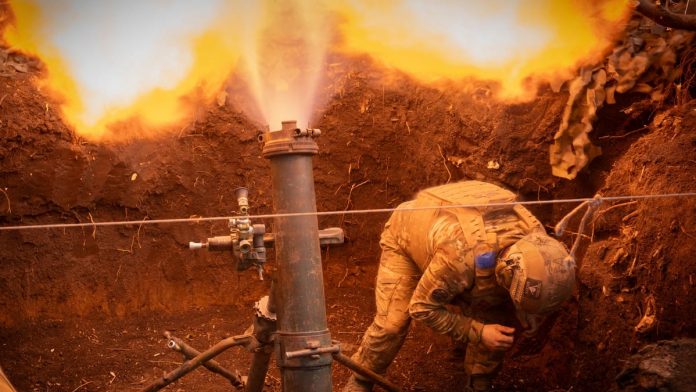Russia's warfare is brutal, its own losses in soldiers and material are immense. How long will Russian reserves last? Military economist Marcus Keupp assesses the situation.
The Russian army is sparing neither the lives of its own soldiers nor the increasingly scarce material in the war against Ukraine. The Kremlin is compensating for this increasing weakness by exploiting old fears of an overpowering Russia in the West, analyzes Marcus Keupp.
In the interview, the military economist explains why he considers Russian threats to the West to be hot air, how short Russia is of material and how Western states can demonstrate strength.
t-online: Mr. Keupp, when will Russia run out of soldiers and material in the war against Ukraine?
Marcus Keupp: Russia is already stingy with materials – at least for now. Because it can be observed that the Russian army is using less of them, at least on the front where it is moving forward. That would be the front area from Kostiantynivka to Pokrovsk in Donetsk Oblast. It is mainly the infantry that moves there; Russia sends its soldiers into “flesh attacks” in which they attack the Ukrainian positions, largely without material support. This is incredibly costly for Russia, but Putin obviously hopes to gain something from it.
The Kremlin will use this kind of warfare as long as it has an effect: Putin wants to spread sheer fear, among Ukrainians, yes, but also among people in the West, to whom the media keeps presenting these frightening images. The Kremlin is currently able to recruit enough new soldiers to replace those killed in “flesh attacks.”
But how long will stocks of tanks and other material last? You once suggested October 2023 as the point at which Russia would have strategically lost the war.
Putin can no longer afford massive losses. When asked when Russia will run out of material, Osint analysts (Open Source Intelligence, editor's note) have calculated different estimates: the optimistic ones assume the end of 2025, the pessimistic ones assume the end of 2027. Everything is below that The prerequisite is that the previous rate of wear remains. So far, Russia has burned its material mercilessly. Time is definitely working against Putin and his regime. In fact, October 2023 was the point in time when the situation for Russia worsened dramatically – because the operational reserve had already been almost completely destroyed at that time.
Marcus Matthias Keuppborn in 1977, is a lecturer in military economics at the Military Academy of ETH Zurich. In his research, the qualified business economist investigates classic military-economic questions and also deals with the security of supplies and critical infrastructure. His book “Military economics“, which is now also available in English and French. His book ” will be published at the beginning of 2025.Lane change. The world after Russia's war“.
But Russia's warehouses were still well filled with tanks? Even if with older and ancient models?
That is the crucial point. Russia is drawing on its Soviet-era reserves, producing too few tanks given the rate of wear and tear and repairing too few damaged ones. That's why ancient T-72s and T-62s are rolling towards the front. The Russian material is getting older and worse. If Russia continues this type of warfare and continues to sacrifice material, then the Russian army will actually be pretty empty by the end of 2027.
How do you assess the current developments at the front?
In this war, phases of wear and tear alternate. There is currently increasing movement, both sides are trying to achieve something. The Russians are trying to move to where the Ukrainian defensive front is weakest. This is the aforementioned front arc from Kostyantynivka to Pokrovsk. Why is the defensive front there so weak? Because Ukraine actually made a tactical mistake because it assumed that it would be able to hold Avdiivka there. If the Russians break through now, they will encounter relatively few obstacles in the subsequent stage. Things are looking better for Ukraine in the south; the Russians are constantly running against the Zaporizhzhia front, but so far they have not achieved any breakthroughs.
But how likely is a breakthrough by the Russian army in the north?
The Ukrainians are now improvising by building new defensive positions in the hinterland and using the terrain's topography to delay the Russian advance. How successful all this will be remains to be seen. The Russians' “flesh attacks” are extremely costly, they claim an enormous number of victims and, on top of that, they are very slow, but Russia is advancing there.
Now the Ukrainian army has occupied Russian territory in Kursk. Doesn't that tie up troops that are urgently needed for defense?



